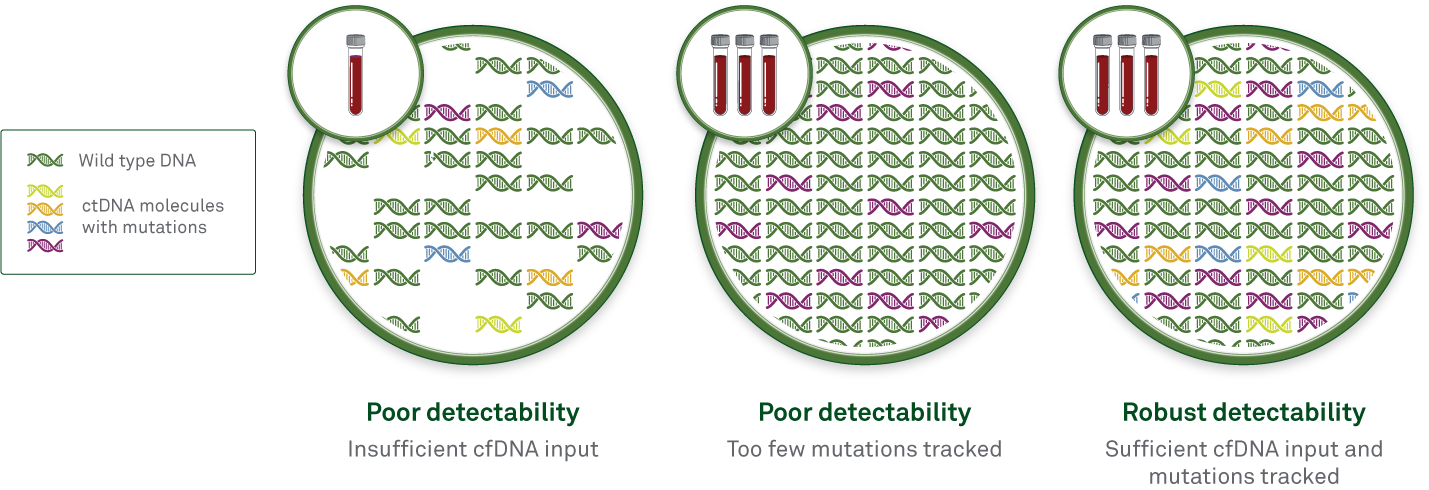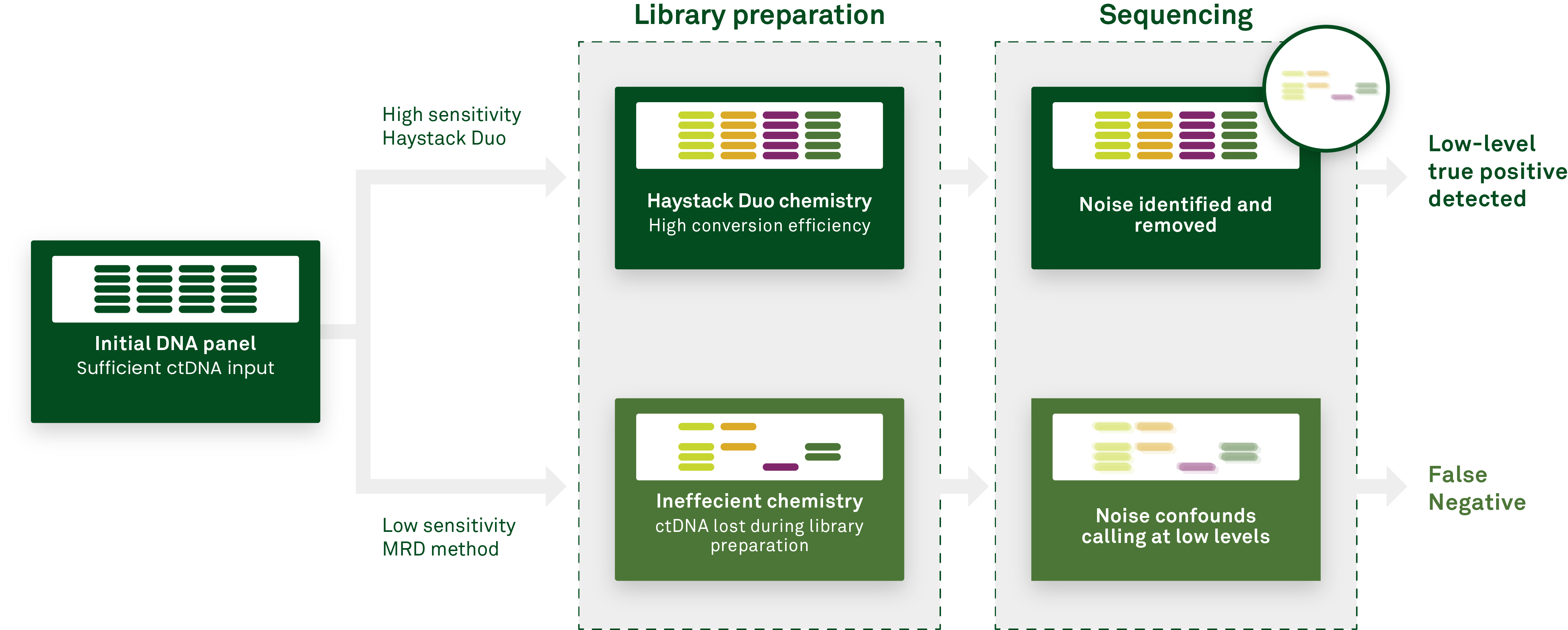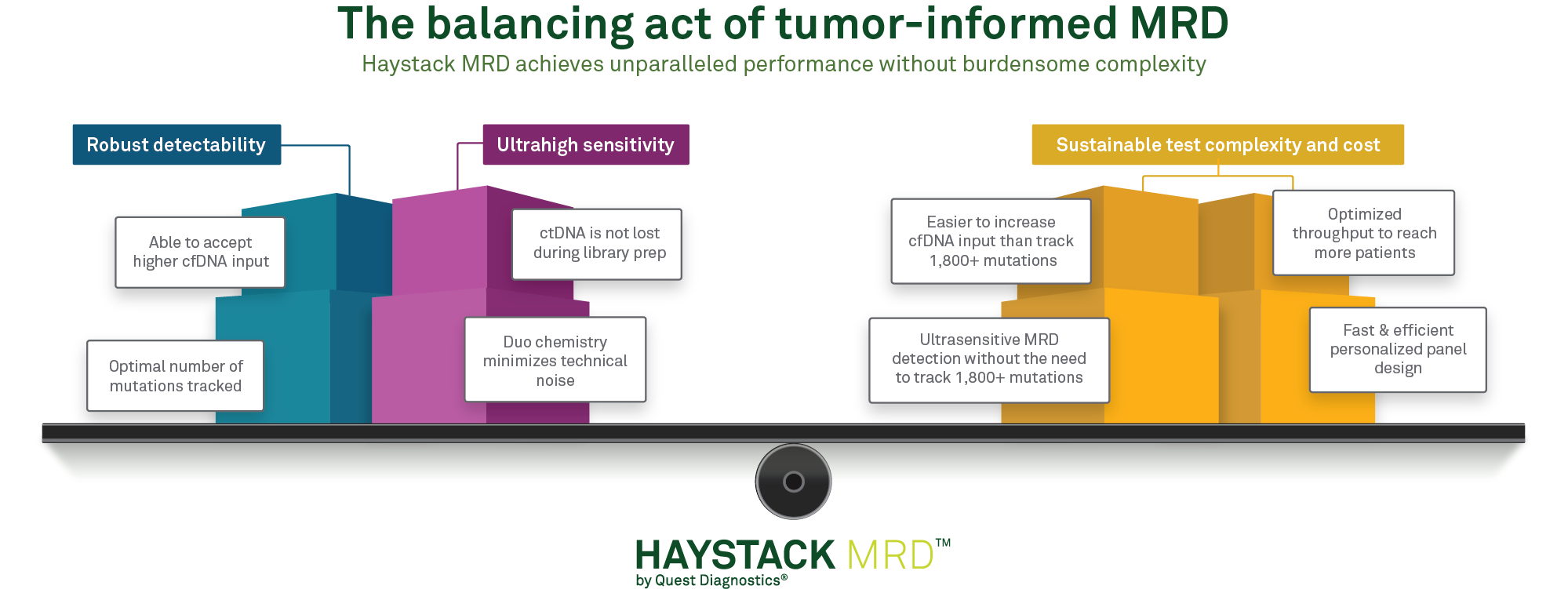Haystack MRD™ strikes the right balance of DNA molecules interrogated and number of mutations tracked for optimizing test efficiency and sustainability
By maximizing sensitivity, minimal residual disease (MRD) tests can confidently detect residual, recurrent, or resistant disease at the earliest time points. For circulating tumor DNA (ctDNA)-based tests such as Haystack MRD, optimal sensitivity—or the ability to detect the smallest quantity of ctDNA in the blood—can be achieved in two ways: by increasing the quantity of ctDNA that is analyzed and by increasing the number of mutations tracked.
Higher input
Increased input of ctDNA molecules can be achieved simply by collecting a greater volume of blood from the patient. Some MRD tests are limited to a maximum input of one or two 10-mL blood tubes, whereas Haystack MRD can accept three tubes per test. Using more input material increases the chances that rare ctDNA molecules will be detected if they are present in the patient’s bloodstream.
More efficient workflow
The number of ctDNA molecules may be further increased by optimizing the efficiency of the assay workflow. ctDNA makes up only a small percentage of the total cell-free DNA (cfDNA) in the bloodstream. After cfDNA is isolated from a blood sample, it is amplified to produce a DNA library that will undergo next-generation sequencing (NGS) to detect mutations that indicate MRD is present.
During library preparation for competitor tests, a portion of ctDNA molecules tend to be lost in the assay workflow. However, Haystack Duo™, the chemistry that powers Haystack MRD, is designed to preferentially convert ctDNA into library, eliminating the competition with genomic DNA that commonly occurs with other methods and maximizing the number of ctDNA molecules that are ultimately available for input into the sequencing step of the assay.
Optimal number of mutations tracked
Sensitivity can also be increased by tracking more mutations—to a certain extent. A caveat is that as more mutations are tracked, more technical noise is naturally introduced in the form of sequencing errors. With increased noise, the MRD calling threshold must be set higher, decreasing sensitivity.
Haystack avoids this potential pitfall because Duo keeps noise low, with less than one error for every 1,000,000 cfDNA molecules. This extremely low error rate translates to a low MRD calling threshold, enabling detection of as few as one mutant molecule in a million DNA molecules. Therefore, Haystack MRD can track up to 50 mutations without introducing troublesome background noise.


Why not track more mutations? Some competitors’ tests include an inordinately large number of mutations, up to and beyond 1800 mutations tracked. However, as more mutations are tracked, workflow complexity and sequencing cost increase accordingly. Most solid tumors harbor no more than 50 mutations, so tracking 50 mutations balances test cost and efficiency while providing industry-leading sensitivity and specificity.
Greater sensitivity
The result is an MRD test that is both more sensitive than other MRD tests on the market and more accessible due to the lower cost and complexity of interrogating an optimal number of mutations. To learn more about how Haystack MRD’s optimal balance between molecules tracked and test complexity leads to unparalleled sensitivity and specificity, click here.



